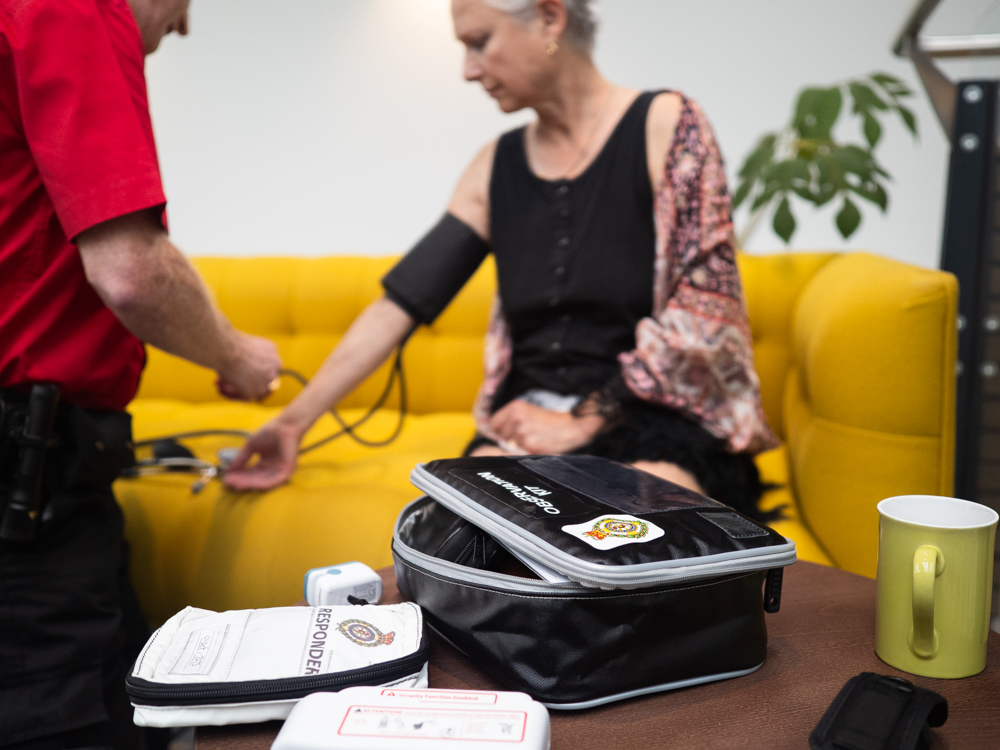
How does it work?
When a caller asks for the ambulance service on a 999 call, the operator transfers the call to the ambulance control centre. For Woking this is the Emergency Operations Centre (EOC) based in Crawley.
Help starts as soon as the 999 call is answered by the EOC who will confirm the address of the emergency and the nature of the call. As soon as this information is confirmed an EOC Dispatcher will mobilise an ambulance to attend the call. At the same time the EOC Dispatcher will activate an available CFR to also attend if they are the nearest resource to the incident. They will alert the CFR by sending the incident details from the EOC computer dispatch system using a secure messaging system within seconds of the call being made. The dispatch message tells the CFR where the incident is located (the address) and provides brief details on the patient’s condition. The CFR will carry either an Airwave radio or similar device to receive updates whilst en-route to the patient. On arrival the CFR can relay any relevant information on the patient’s condition to EOC who can also pass this information to the ambulance vehicle(s) travelling to the scene using blue lights and sirens. CFRs can speak to EOC at any time to ask for incident information or to obtain clinical guidance if required.
Each CFR covers an area within a 5-10 minute radius from their house, ensuring they are able to provide that vital immediate response. CFRs are dispatched to the majority of 999 calls the ambulance service receives except for incidents which could put them in danger such as road traffic incidents or scenes of crime.
As soon as the On-Duty CFR receives a call they will drop whatever they are doing and proceed to the scene. If driving is involved, it will be under the Highway Code and CFRs are expected to comply with the law while driving to incidents.
On arrival the CFR will have all the training and medical equipment necessary to manage the patient in those first few critical minutes before the ambulance arrives. In many cases the CFR may not actually be required to do anything other than reassure the patient and make sure that the ambulance is able to find the location. However, we know that the CFR’s presence could also save a life, for example, as a result of a simple airway open manoeuvre, defibrillation or treating choking. The CFR will always be backed up by an emergency ambulance as soon as possible.